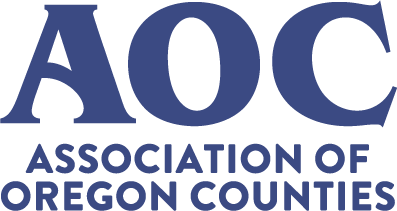
iSector Promotes Rural Capacity Building
Sponsored content contributed by AOC Business Partner: iSector
At the Oregon iSector, we bring together leaders from the private, public, and civic sectors to tackle Oregon’s most complex challenges. Through partnerships and innovative systems, we aim to build thriving communities statewide. Highlighting this mission, we are proud to present two initiatives focused on building the capacity of rural jurisdictions to drive progress and unlock potential.
Housing Innovation Partnership (HIP)
REGIONAL HOUSING COORDINATORS
THE CHALLENGE
Oregon’s housing shortage, particularly for workforce housing, limits economic growth and community vitality. Employers struggle to attract workers due to a lack of affordable housing, while developers face barriers to financing projects. Rural areas are especially impacted, with few resources to address these challenges.
The iSector’s Housing Innovation Partnership (HIP), a partnership of 35+ with a shared goal to increase housing production in Oregon has become aware of both existing successful and promising potential efforts to bring employers together with developers in building housing. The missing link is the need for someone to play the catalyst role in bringing the needed partners together at the community level.
THE SOLUTION
The HIP proposes creating five Regional Housing Coordinators across the state. These coordinators will work across sectors to:
- Inform local businesses, school districts, hospitals and other employers about opportunities to co-invest in housing.
- Provide support for developers and builders by connecting them with investment partners, available land, and housing resources. The coordinators would work to help create a network of support at the community level.
- Work with cities and counties to inform them of housing opportunities and how they can contribute to co-investment efforts through financial incentives and identifying available lands for development.
- Assist partners in developing agreements and strategies as well as removing barriers to co-investment in housing.
NW Rural Investment Strategy (NWRIS)
RURAL COMMUNITY RESOURCE CENTER
THE CHALLENGE
Rural Communities often lack the staff capacity to plan, access and manage resources that come in the form of State and Federal funding; philanthropic investments; and partnerships with the private sector. At the same time, unprecedented resources are available from the federal government to support rural cities and counties; state resources are being allocated for targeted needs; and the philanthropic community increasingly is looking for new ways to help these underserved communities. Even in this resource rich environment, rural communities are not in a position to seize these opportunities. Rural communities are a critical component to Oregon’s economic future and deserve the foundational basic support they need to do so.
THE SOLUTION
Local Capacity
The Oregon iSector has worked with legislators, local officials, and others to develop a Rural Community Resource Center that will provide resources for building the capacity of and providing technical assistance to rural communities, helping to break this cycle of disinvestment. It will serve as a one-stop hub for rural leaders, housing: project managers; grant writers; professional staff expertise in public works; engineering; community development; land use planning; transportation; public administration and finance. This staff resource would be available to rural communities throughout the state to fill the gaps that exist today and position communities to prosper and seize opportunities that they could not, given the lack of access to this expertise.
Community Leverage Fund
To accelerate on the ground action and leverage public, private and civic resources, the Centers budget would include a leverage fund. The fund would allow communities and regions to offer incentives for collaborative multi-sector work and serve communities with the most significant concentrations of poverty. The fund would be deployed on a regional basis to ensure equitable distribution.
Building a Thriving Future
Both initiatives reflect Oregon iSector’s mission to empower communities through partnerships and innovation. By addressing housing shortages and capacity gaps, these programs pave the way for economic growth and resilience in rural Oregon. At iSector, we are committed to creating sustainable systems and opportunities for every corner of the state. Reach out to us today to learn how we can support your community’s growth and success.


